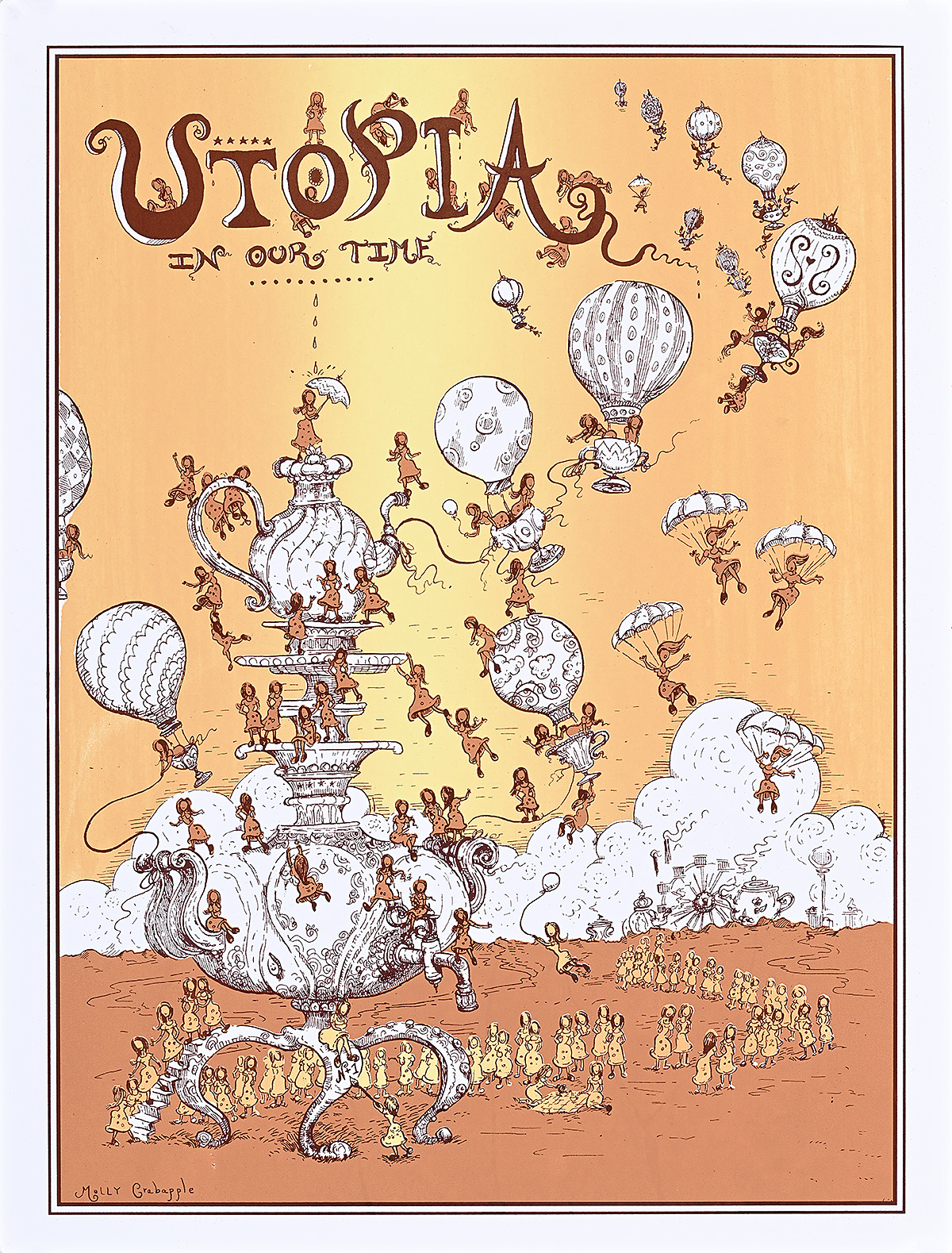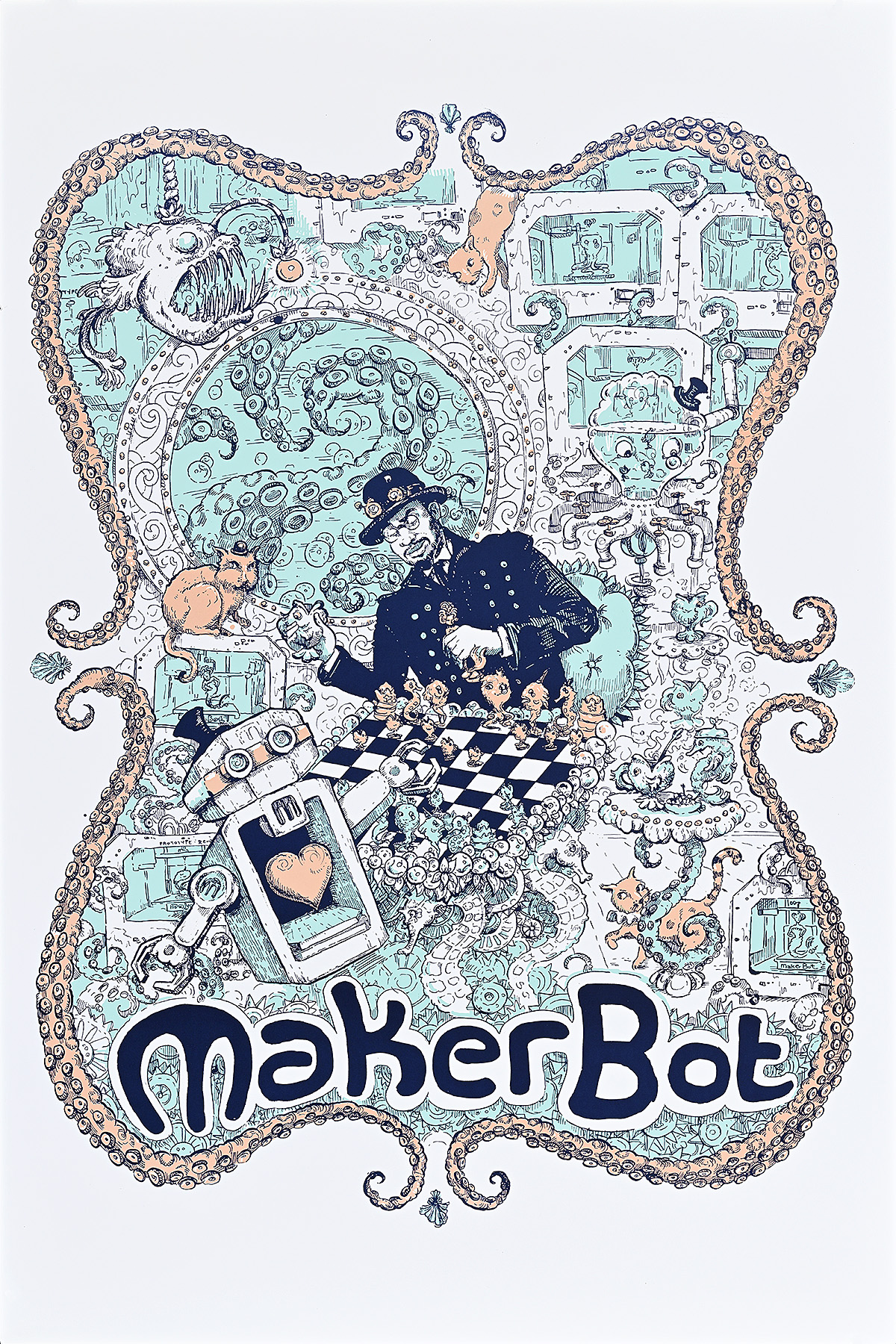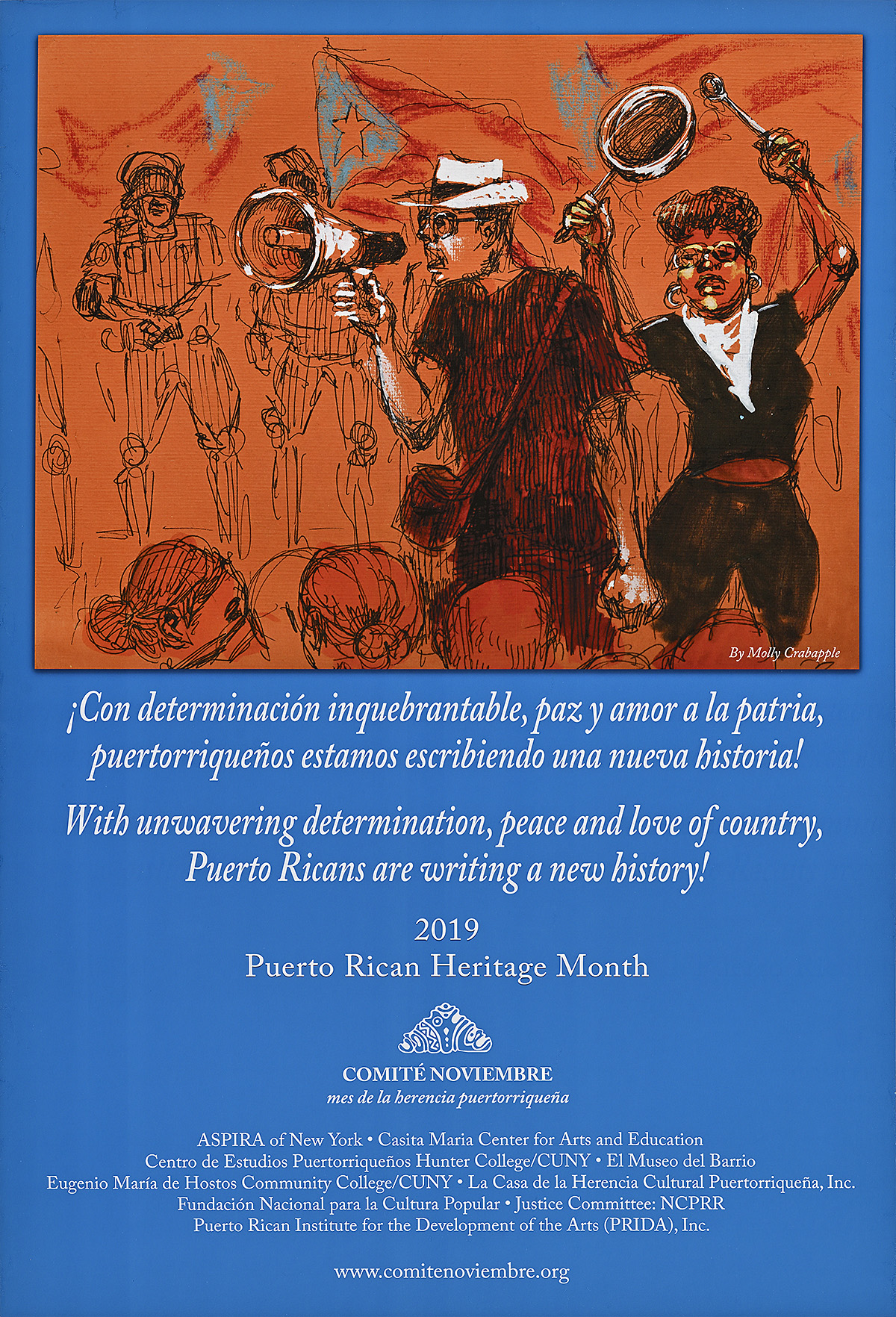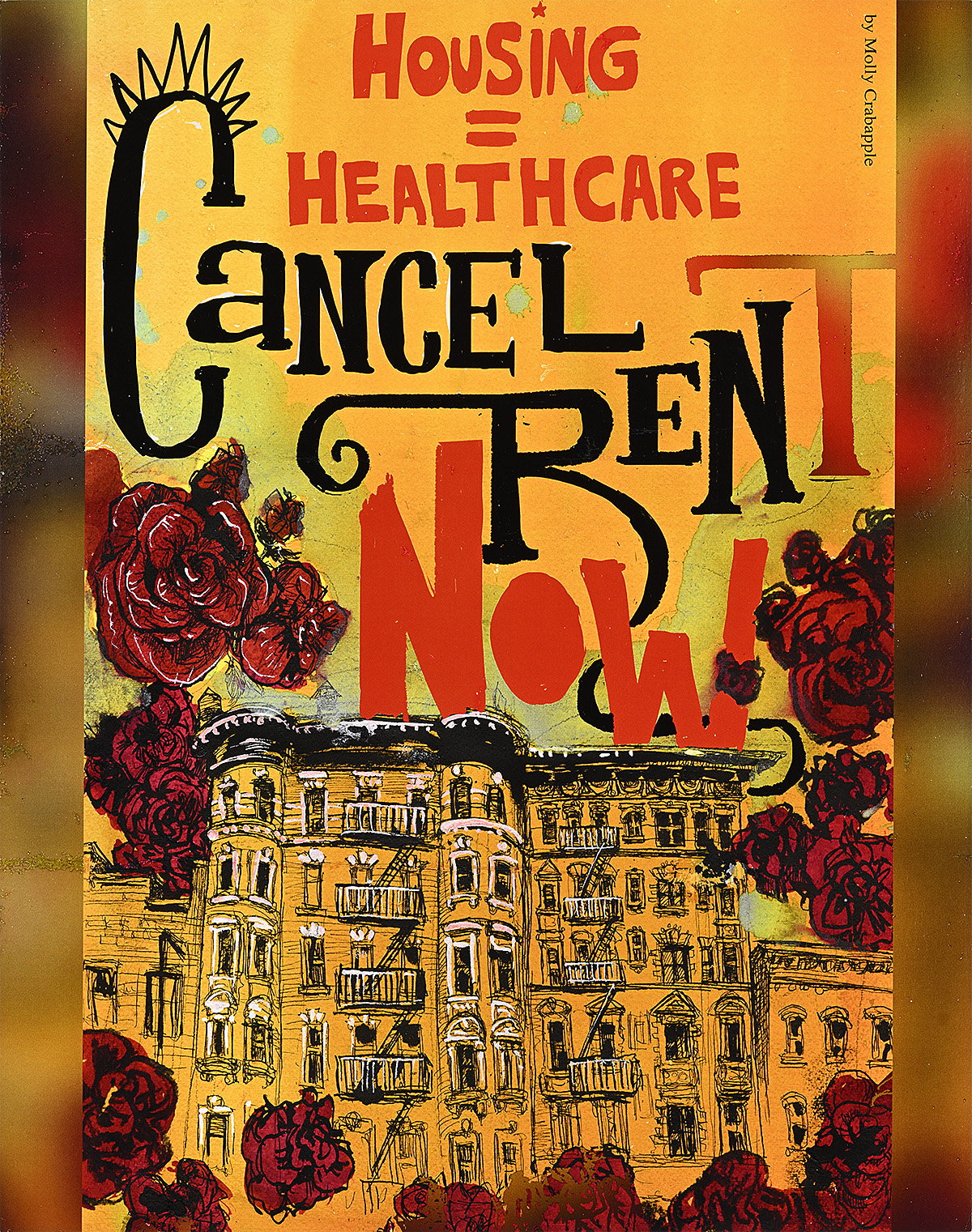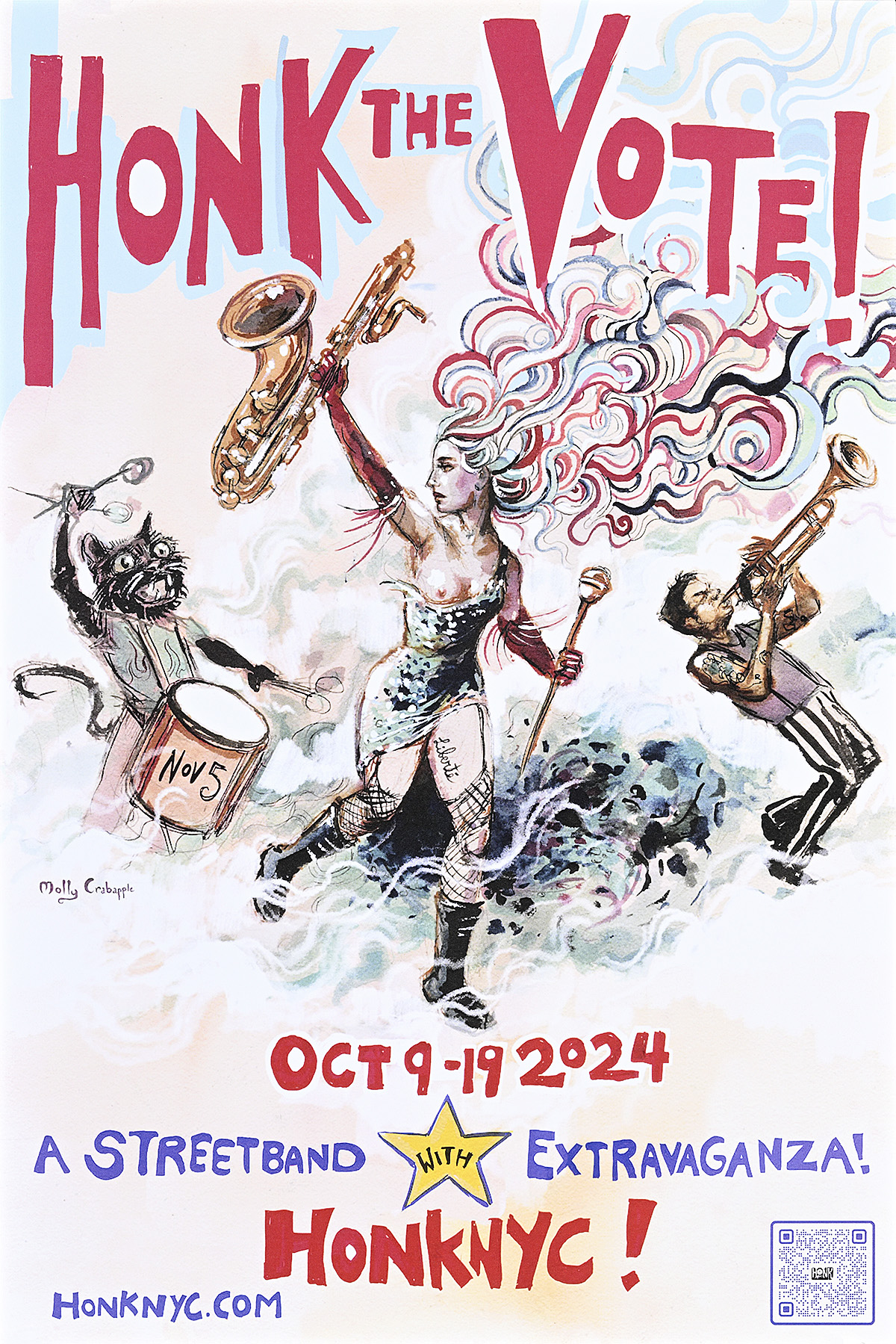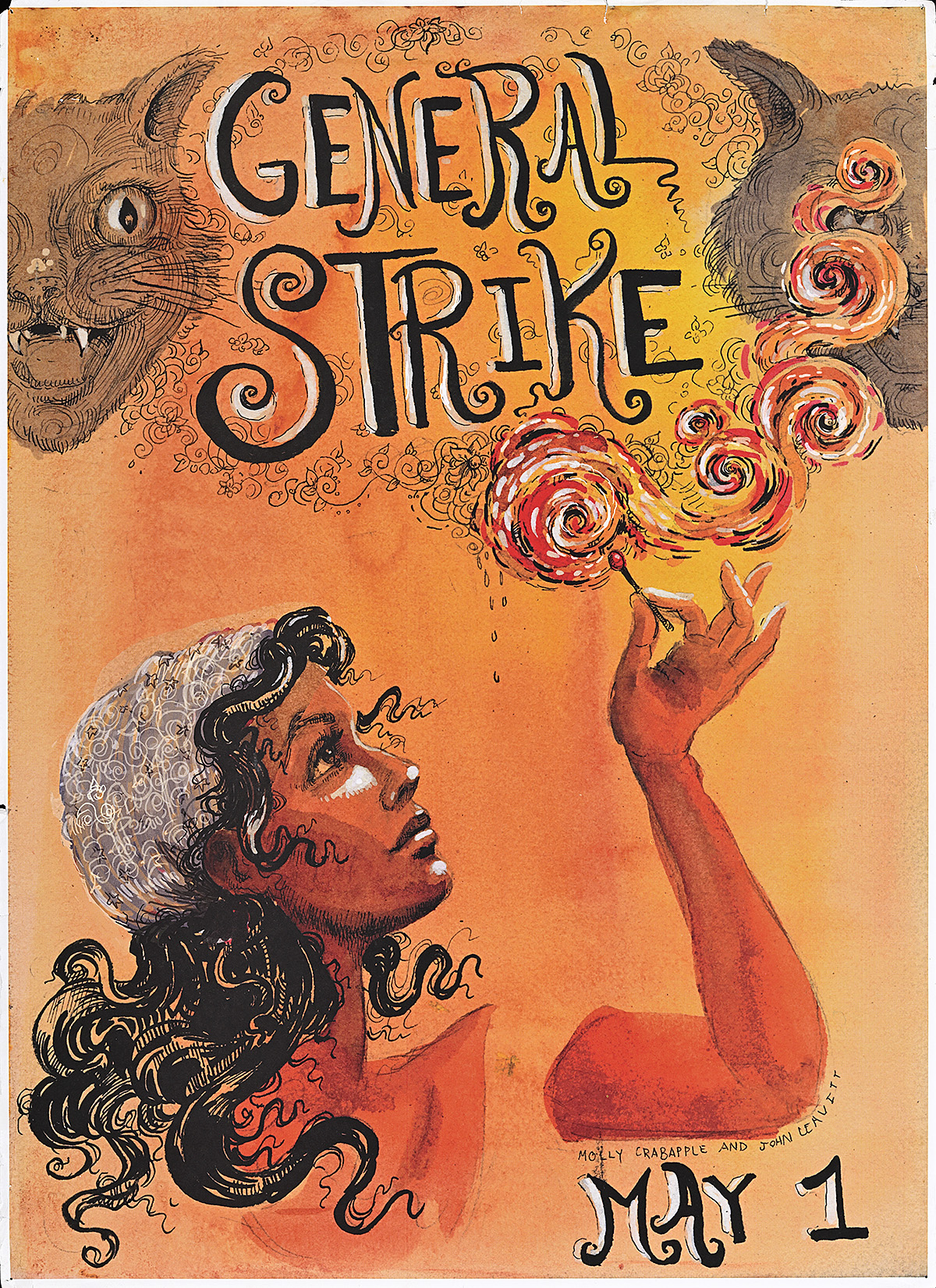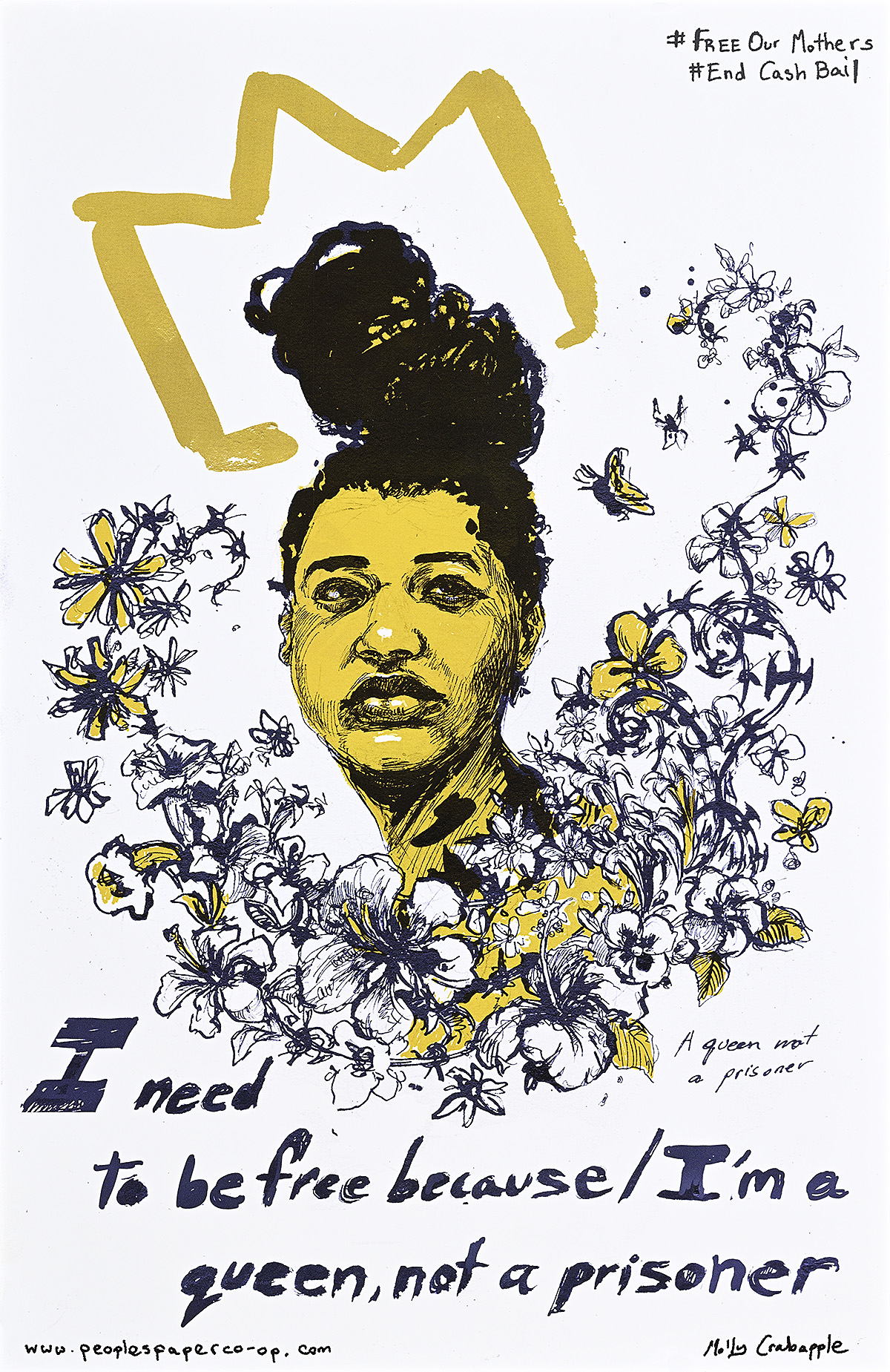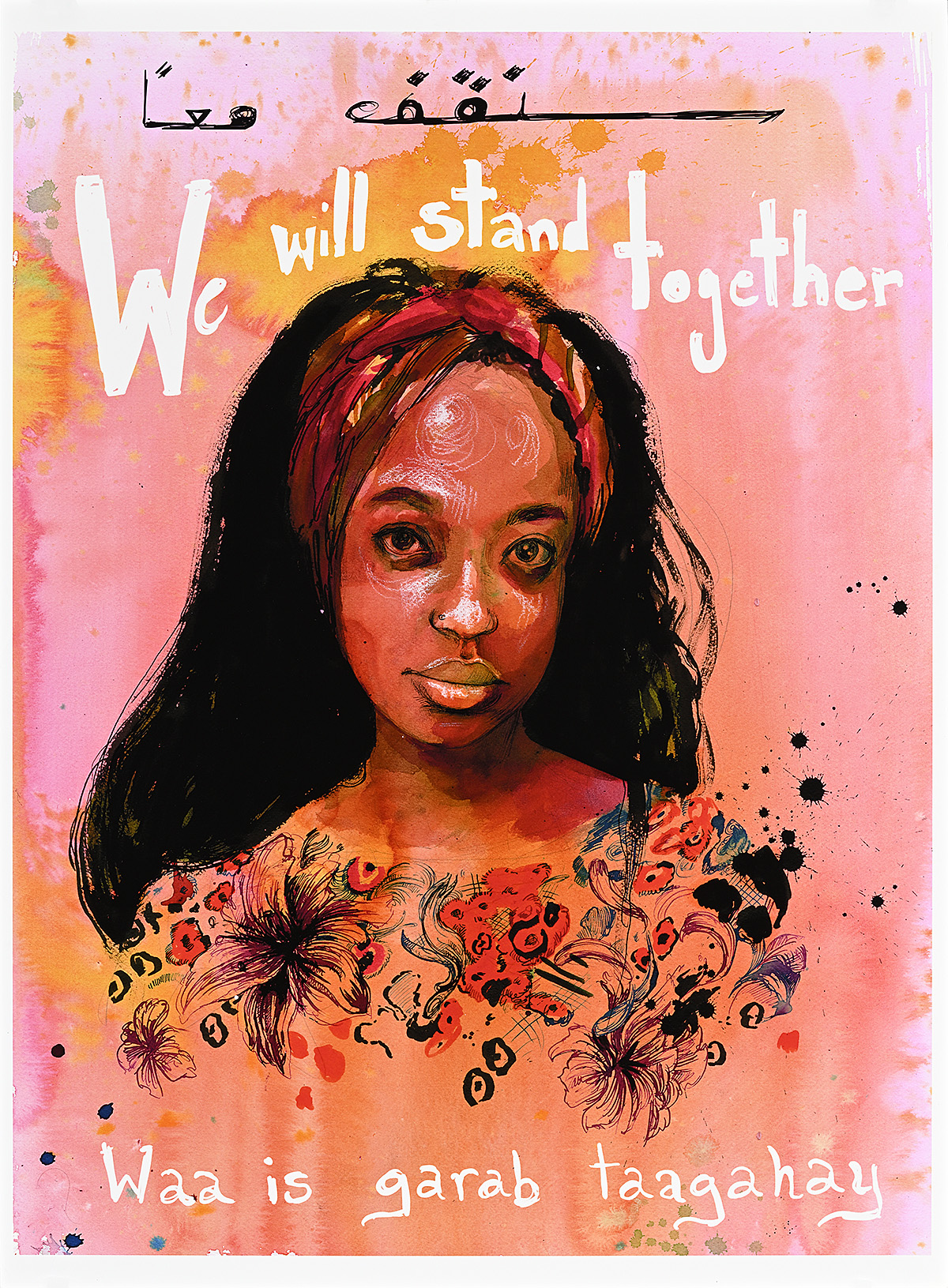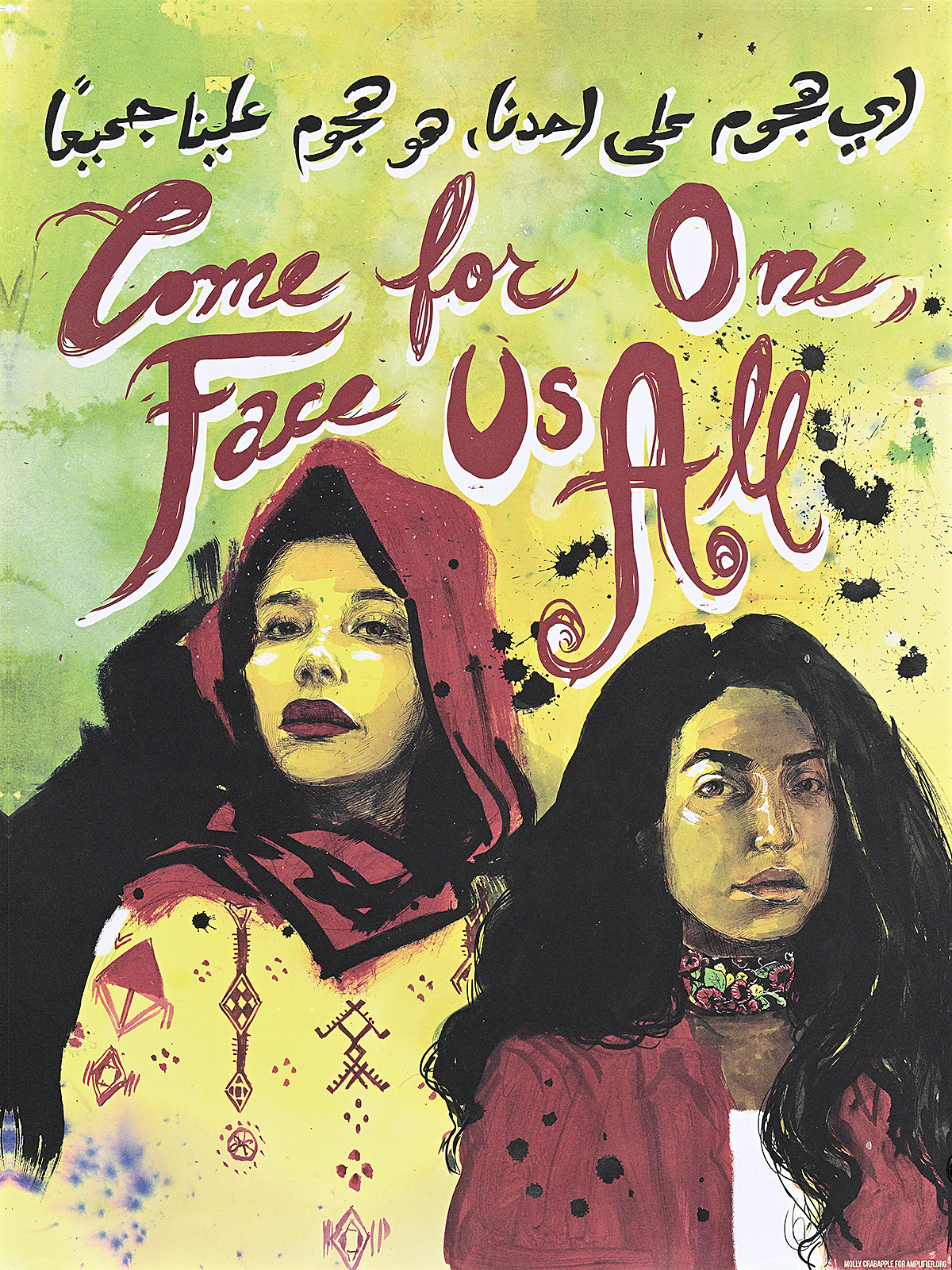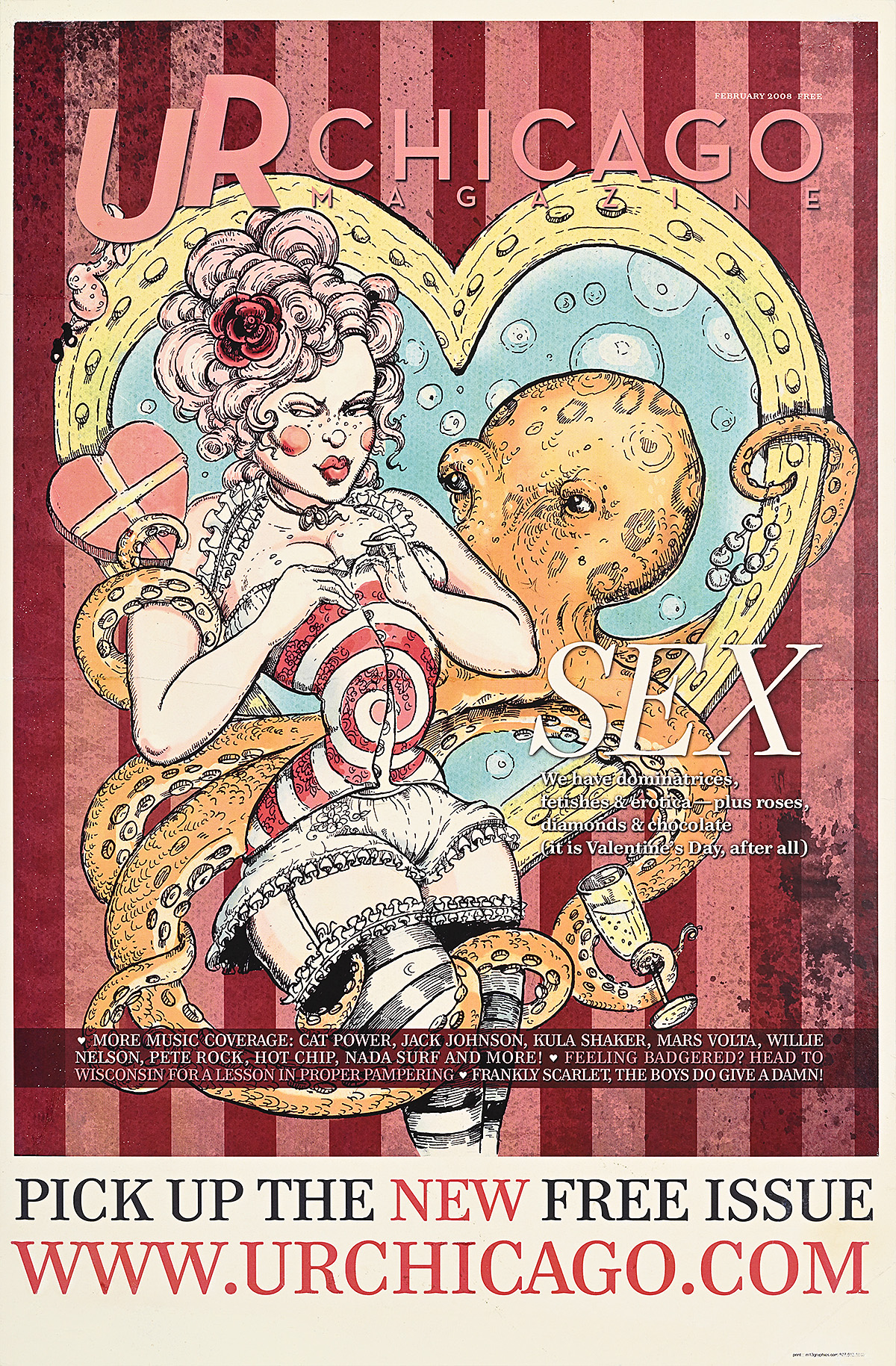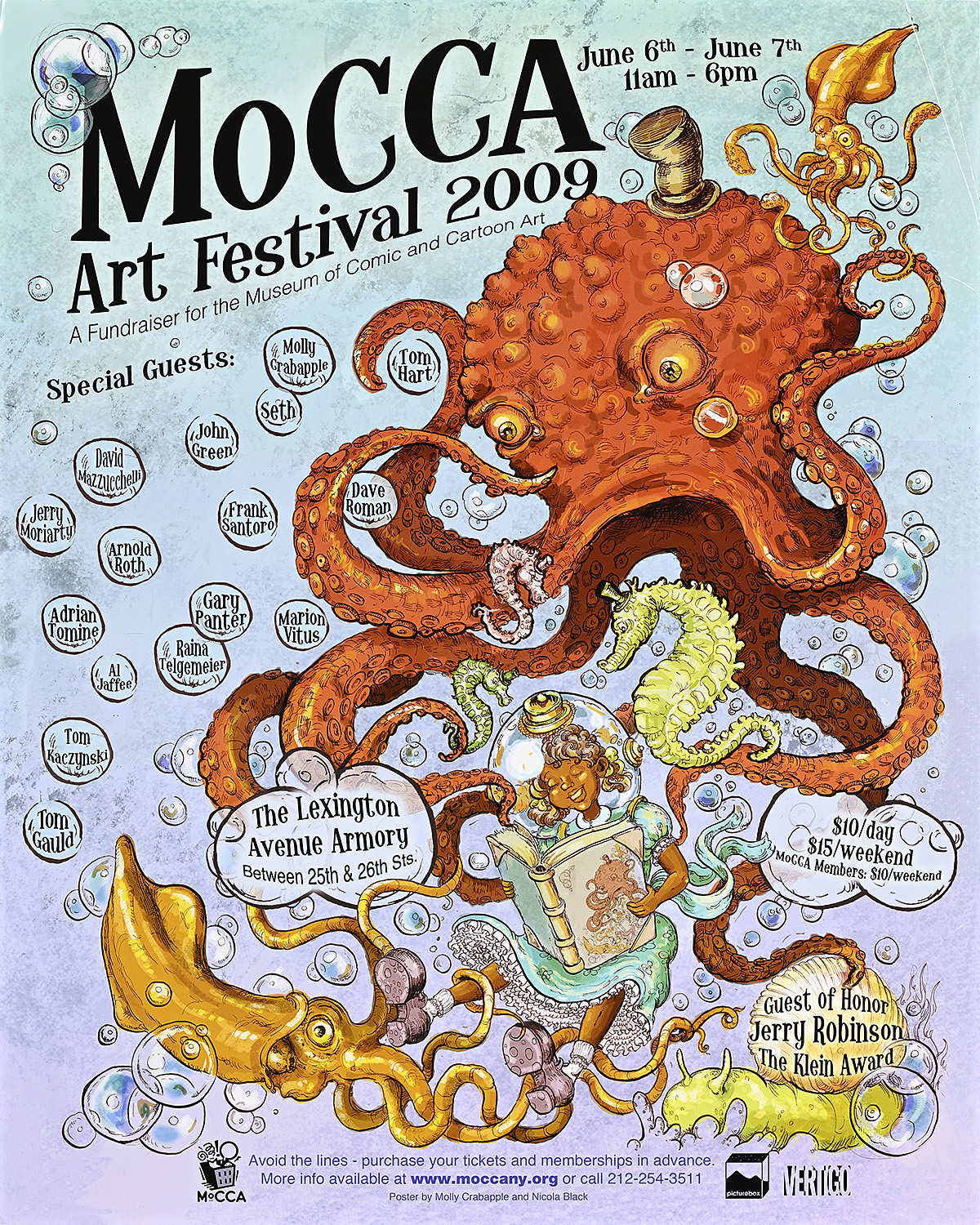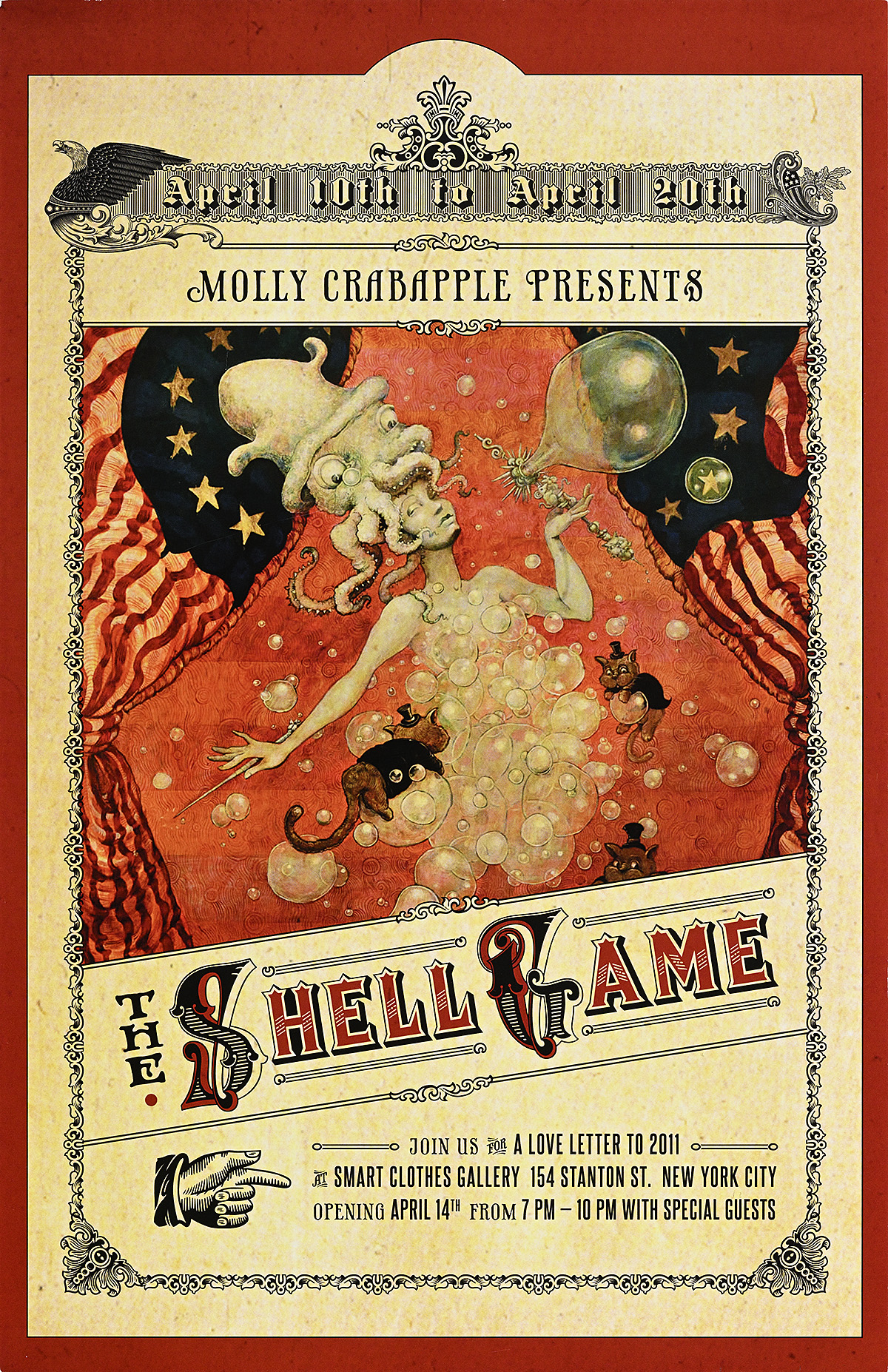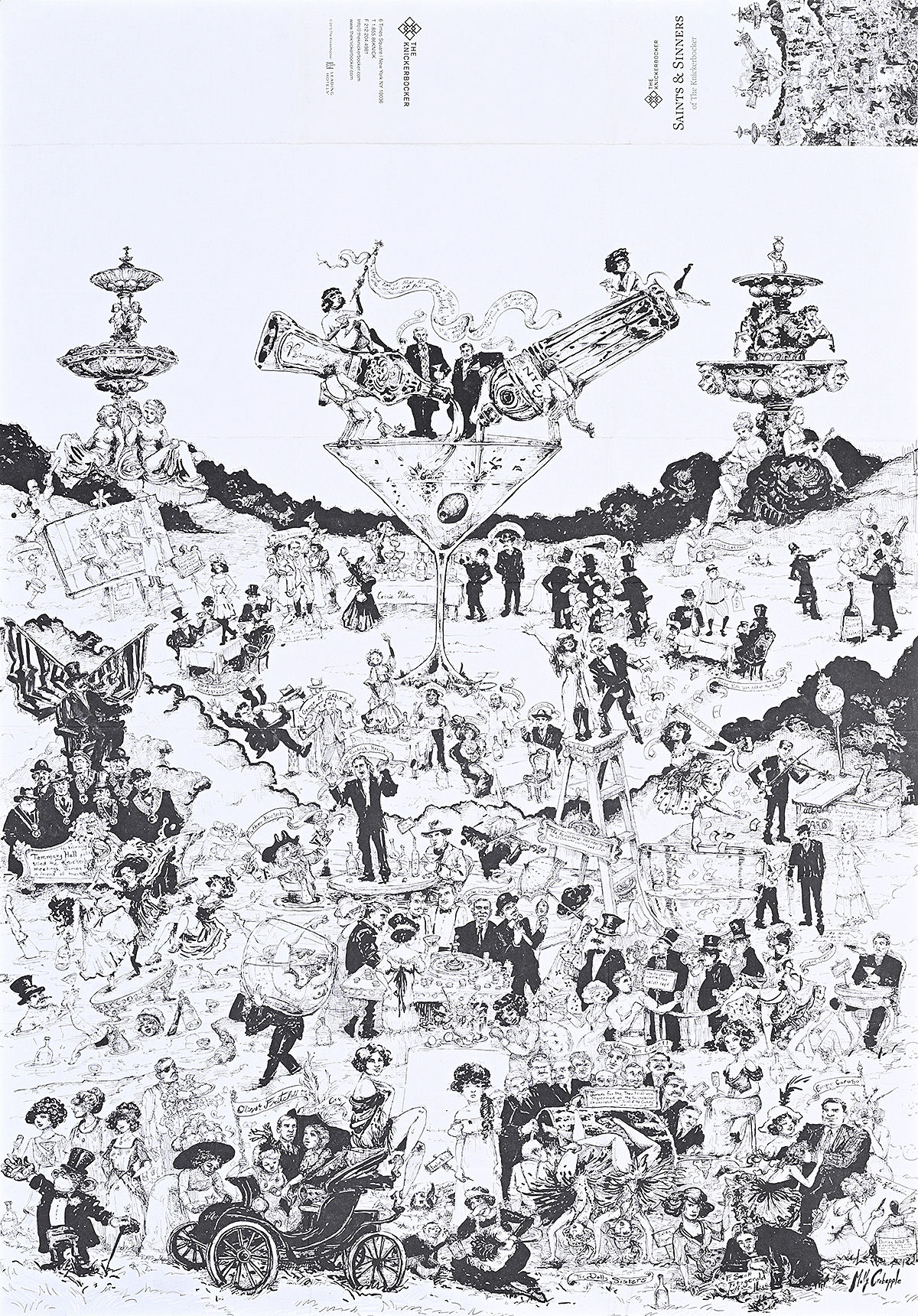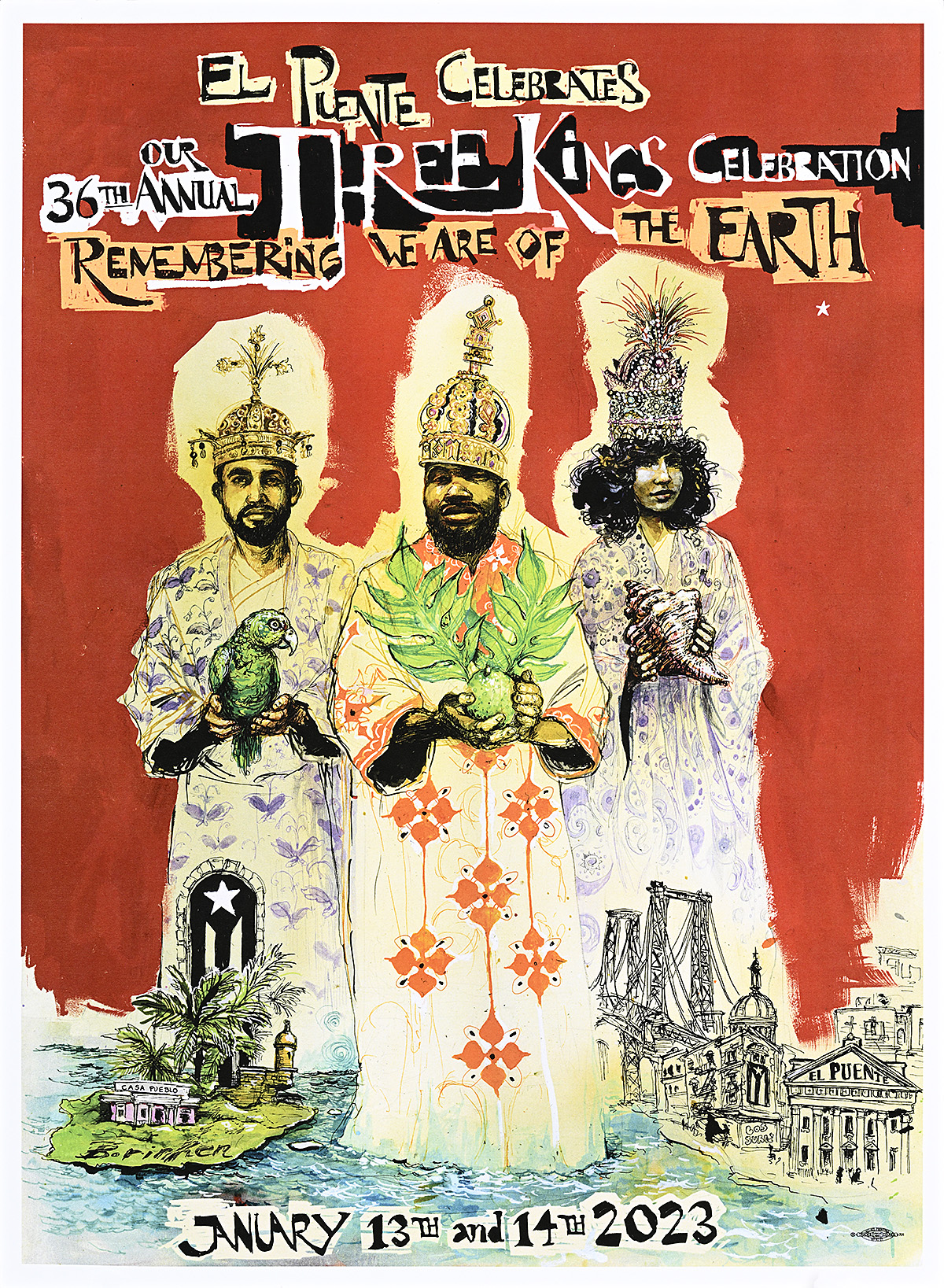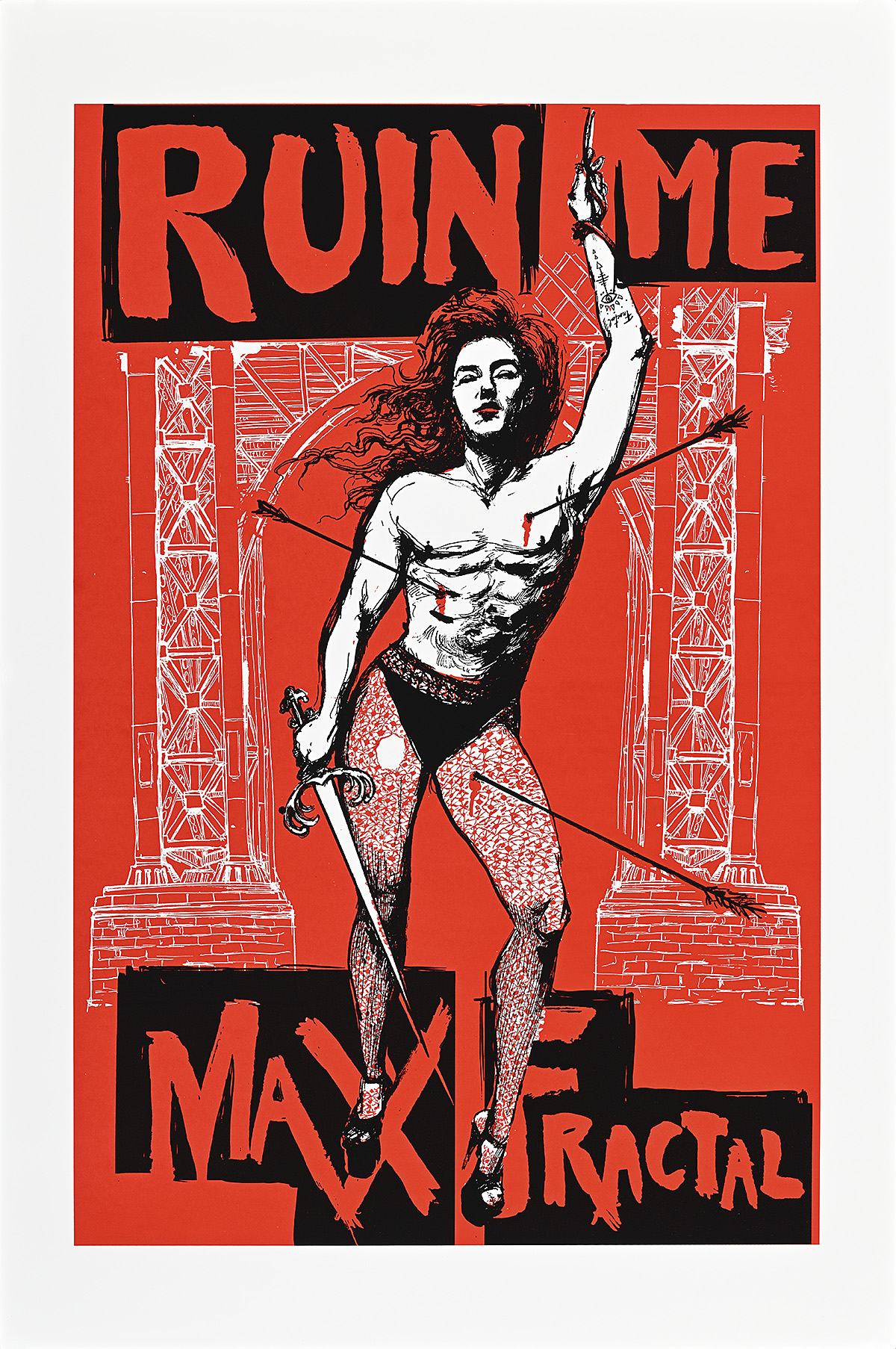Utopia in Our Time: The Posters of Molly Crabapple
American poster design has traditionally been the work of illustrators rather than graphic designers, who typically dominated the field in Europe. Many of these illustrators also contributed to satirical journals and government propaganda, and were therefore well positioned to provide a visual critique of society and politics, creating sophisticated designs that exposed human folly and enticed the public. The posters of Molly Crabapple (née Jennifer Caban) demonstrate the natural progression of this lineage. In them, she introduces detailed, eccentric, and winsome images to express her observations on the resilience of community, the power in solidarity, and the spirit of celebration. Molly engages viewers in these three pillars of her practice in political and social discourse while enhancing the beauty of public spaces.
Molly’s designs often combine dreamlike and satirical motifs accented by pretty figures and symbolic animals that comment on some of the complexities of national and international establishment. Although influenced by a range of historic sources, including the nightlife illustrations of Henri de Toulouse-Lautrec, the dark surrealism of Francisco Goya, and the hatching technique defined in the classic guide Rendering in Pen and Ink by Arthur L. Guptill, Molly’s approach and messaging are entirely contemporary. She divorces her work from the rigid conventions of traditional art, rejecting the labels of “activist” or “social-practice artist” as she embraces both the functional and the fanciful.
As both keen observer and engaged participant, Molly presents the world in stories told through a series of fantastic, sensual, and humorous illustrations. This exhibition emphasizes the diversity of her work, encompassing a range of topics and global cultures. Molly Crabapple not only believes that posters should be out in the streets and in the homes of ordinary people but also puts these ideas into practice by addressing audiences outside of formal gallery spaces. Much like her life experiences, her posters are far-reaching and ambitious, and, most importantly, they are centered on recognizing every person’s capacity for creativity, joy, and rebellion.
Unless otherwise noted, all posters in this exhibition are part of the Poster House Permanent Collection.
Whenever feasible, Poster House reuses materials from previous shows to drive sustainable practice.
Large text, Spanish translation, and a Plain Language summary are available via the QR code and at the Info Desk.
El texto con letra grande, la traducción al español y un resumen en lectura fácil están disponibles a través del código QR y en atención al público.
